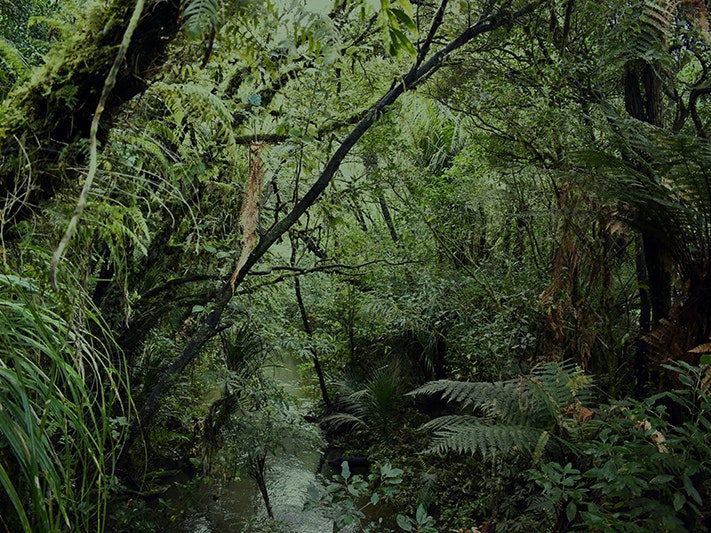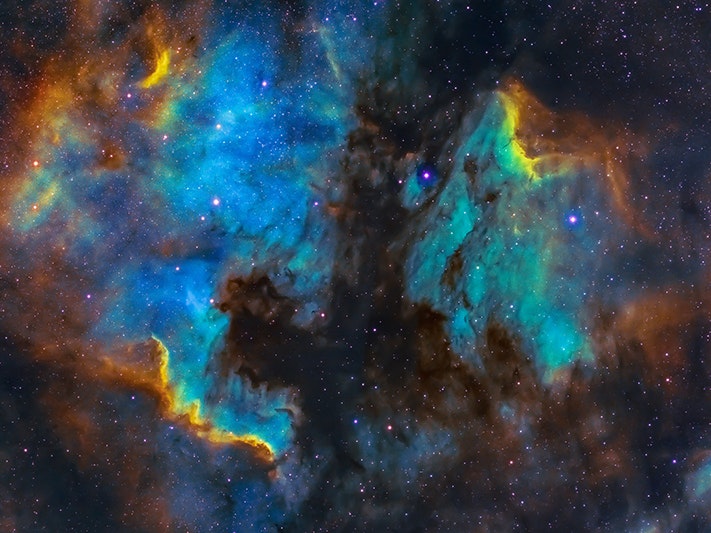
Activity B: The children of Tāne
Explore the magical connections that exist in whakapapa (ancestry) and imagine the place for human beings inside a thriving web of life.
Free museum entry for New Zealanders and people living in New Zealand
Open every day 10am-6pm
(except Christmas Day)
Free museum entry for New Zealanders and people living in New Zealand
Explore the beginning of time in Aotearoa through pūrākau.
Begin to understand the depth of knowledge that exists within whakapapa through pūrākau.
|
He pitopito kōrero “Creation traditions are the most sacred of all traditions because they lay down fundamental beliefs about the nature of reality. Creation genealogies are the foundation from which all other whakapapa derive.” – Dr Rawiri Taonui (Te Hikutū and Ngāti Korokoro, Te Kapotai, and Ngāti Paeahi, Ngāti Rora, Ngāti Whēru, Ngāti Te Taonui) To begin to understand whakapapa, it is important to start at the beginning. Pūrākau – about Te Kore, Te Pō, and Te Ao Marama, Papatūānuku, and Rangi-nui – and all the foundational narratives of atua, are powerful tools to help us think about who we are and how we fit, as humans, into the order of things. Atua are all the ancient ones who continue to be present in the natural world. Within mātauranga Māori, atua are all around us every day, manifested within te taiao. Pūrākau teach us ways to interact with te taiao, and each other, in ways that respect ngā atua Māori. There are many pūrākau and these differ for hapū and iwi Māori. If possible, engage with the stories that are reflective of the landscape around you. We have also linked to some excellent pūrākau in the Extra links for the extra curious section. |
Choose a pūrākau to read with a friend or with your class.
|
Discuss: What are the big plot points of the pūrākau? How would you retell this pūrākau to someone who hadn’t heard it? How does this pūrākau provide us with guidance for living in balance with each other and with the land? |
Many artists in Te Papa’s Collections Online, have powerfully imagined some of the atua within pūrākau, including:
Robyn Kahukiwa (Ngāti Porou, Te Aitanga-a-Hauiti, Ngāti Hau, Ngāti Konohi, and Whanau-a-Ruataupare)
Kura Te Waru Rewiri (Ngāpuhi, Ngāti Kahu, Ngāti Rangi, and Ngāti Raukawa ki Kauwhata)
Hinerangi To Ariari Winifred Belcher (Ngāti Pikiao, Ngāti Rangiteaorere, Ngāti Uenuku Kōpako, Ngāti Whakaue, and Te Arawa)
Lisa Reihana (Ngāpuhi, Ngāti Hine, Ngaituteauru)
Hariata Ropata-Tangahoe (Ngāti Toa, Ngāti Raukawa, and Te Atiawa)
Lonnie Hutchinson (Ngāi Tahu, Ngāti Kurī ki Ngāi Tahu)
You can explore these on the slideshow above. After exploring these artworks, you may like to:
research an atua of your choice and then brainstorm what you think they might look like and where their domains might be
design and draw your own version using a digital collage tool. Layer up elements such as costume, setting and props to help tell the story of your chosen atua.
imagine the colour and symbols that could represent an atua in te taiao. What symbols could represent the energy of Tānemahuta, or the energy of Tangaroa, for example? Using coloured chalk, draw the symbols of each atua on the ground. See if others can guess the atua you are describing.
expand your understanding of atua wāhine, exploring the pūrākau of hinepūkohurangi and Hineraukatauri, for example.
write a poem about each atua, without using their name. See if others can guess the atua you are describing through words or lines.
draw and cut out paper silhouettes to reflect the characters in the pūrākau. Then imagine and write a speech they would say about their home, their feelings, their conflicts, their worries and hopes.
|
Discuss:
|
Pūrākau are dramatic and exciting. Research pūrākau from your own cultural traditions. There are many ways in which you can use drama and dance to explore them. You may like to:
take one pūrakāu and, in a small group, retell the story. One person may choose to be the narrator, or provide a voice-over, or you may choose to all act it out. Either way, use a variety of dramatic conventions, such as freeze-frame or slow motion.
take one of the pūrākau and simplify the story into some simple choreographed dance moves. Ask the audience when you are performing it to look out for some of the moves (eg. the pulling up of the island or the preparation of the fishhook.)
identify the main plot points of each pūrākau. Devise freeze frames to communicate the story. Take photographs of each scene, and caption each one to create a short story.
Choose one origin story that is relevant to you and your ancestors. Divide a large piece of portrait paper, such as A2, into three even segments, for sky, land and foreground. Design a visual image that will communicate your origin story into these segments. Line your image up alongside others that have been made.
|
Discuss:
|
Shark, Angel, Bird, Ladder, 2008, by John Pule. Purchased 2010. Te Papa (2010-0034-1/A-B to B-B)
This artwork by John Pule, Shark, Angel, Bird, Ladder, connects the artist’s culture in Niue, with his dreamscape, presenting symbols from Niue alongside other narratives that are important to this artist. If you would like to learn more about this interesting work, or zoom in on the details, have a look at the painting on Collections Online.
Seven Days, by Baye Riddell, terracotta, Mars black, uku, clay, 2012. Purchased 2014. Te Papa (ME024174)
This sculpture in Te Papa’s collection, Seven Days, by Baye Riddell (Ngāti Porou, Te Whānau-a-Ruataupare), presents Māori pūrākau alongside other narratives that are important to this artist. If you would like to learn more about this stunning work, or zoom in on the details, have a look at the description on Collections Online.
How might you create your own sculpture to reflect a story from your cultural tradition? What material might you use and why?
What are the symbols and shapes you might use to convey the message?

Explore the magical connections that exist in whakapapa (ancestry) and imagine the place for human beings inside a thriving web of life.

Take a mind-bending journey to find our place in the vast cosmos of time and space.

Go down amazing wormholes with this curated suite of links.